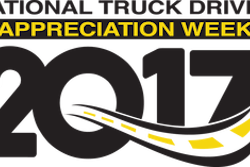The following comes from the September 2017 issue of Truck Parts & Service. To read a digital version of the magazine, please click the image below.

Employee turnover is a hassle in all areas of the aftermarket. Career employees are retiring out of the industry at an incredible rate, and the pipeline behind them is thin.
Filling open positions has become one of the industry’s biggest challenges. Though there’s no simple solution to the aftermarket’s hiring shortage, one long-accepted appointment method gaining steam with distributors is promoting from within.
Promoting from within doesn’t remove the need to hire new people, but it does allow a distributor to move their best employees into their most important roles, shuffling job openings to lower- and entry-level jobs that are, by nature, easier to fill.
Distributors using the tactic in the market today are universally supportive of it, but even with such accolades, promoting from within isn’t foolproof. Properly promoting from within requires an understanding of what the tactic does and doesn’t provide, and evaluating each open position objectively to determine the best way to fill a post.
Advantages
Weldon Parts President Dave Settles says there are several reasons he promotes from within “every chance I can,” but in his eyes, the biggest is culture.
Bringing in someone new doesn’t always rock the boat, but it’s rare that new hires immediately and innately understand how a business operates. Moving an employee within an operation is considerably easier than onboarding someone new who must be trained on every aspect of their new job.
Settles says Weldon Parts has a unique culture built over decades to maximize operational effectiveness and customer experiences. New employees, even those with prior aftermarket experience, can take some time picking up on all of it.
“We’re a little different than everyone else and when you bring in someone new, you have to teach them that,” he says. “Some pick it up faster than others.”
The experience is the same at Blaine Brothers, where President Dean Dally also relies heavily on internal promotions to fill as many openings as possible.
“We’ve found it’s very difficult to find people from the outside who can quickly pick up and maintain our culture,” he says.
In both cases, the culture refers not only to how employees interact with each other and customers, but also how they approach and complete tasks. Training employees on a new position is much easier if they’re already aware of a company’s performance standards.
“You don’t want to have to keep re-teaching your culture,” Settles says.
Another huge advantage of promoting from within is the message it sends employees. Show up every day and do your job and career advancement can be a reality, says Allan Parrott, president at Tidewater Fleet Supply.
“I think there’s a trust factor there,” he says. “If an employee has done really well for us over the years we want to give them the opportunity to advance. We want to reward our employees who work hard and want to do more.”
Bill Nolan also stresses advancement as part of the culture at PBS Truck Parts. He says not every employee is destined to rise through the PBS ranks, but the company’s management team still does its best to showcase opportunities and motivate employees to consider advancement.
“Sometimes employees may not understand what they have,” says Nolan, PBS president. “They might not understand they could [one day] be a store manager.”
Upward mobility is particularly valuable with younger employees who crave recognition and growth opportunities.
Says Michael Callison Jr., vice president of purchasing, safety and training at Midwest Wheel, “By promoting from within we are better able to keep people motivated—especially with millennials—it is always important to let people know there are chances for promotion.”
The distributors also ask employees to speak up when they become interested in new opportunities. “We want to know if folks are interested in moving up,” says Parrott. “Once we know that we can keep an eye on them and start looking for ways to move them up the ladder.”
Finally, there’s the unspoken yet enormous financial benefit. Onboarding new employees is costly.
“We’ve never figured that actual number, but I know it’s expensive,” says Settles of bringing on new employees.

The reasons for this are voluminous, but the largest expenditure can be traced to productivity. As mentioned above, it takes a lot of time and training for a new person to be integrated into a business. When compared to swapping one employee for another, it’s a no brainer.
Disadvantages
Promoting from within works better with some positions than others. Settles mentions sales roles, specifically, as an area where it can be tougher to move current employees.
“You can sort of see the progression for someone from warehouse manager to branch manager, but sales people have a different mindset,” he says. “The skills are different.”
Adds Parrott, “It’s easier to find people for warehouse or driver positions but it can be hard to find a good counter guy—particularly on the heavy-duty side. Those guys don’t grow on trees.”
The same roadblocks can be found when pushing employees into leadership roles. The higher the position, the smaller the pool of realistic candidates for the role.
Nolan says his first step when filling a leadership position is to evaluate in-house candidates. In cases where the perfect person isn’t found, he will consider outside applicants, but he says that approach is not always ideal.
“You certainly don’t want to over-promote people,” he says, “but most of the time the people who are out there come with some downside risk as well. If they didn’t, they wouldn’t be out there.”
Over promoting is another risk. Some employees are best where they are, and can struggle when presented a different role and/or more responsibility, even if it’s something they wanted and applied for.
“Every single person is potentially the weakest link” in a business, Nolan says.
Addressing these failed promotions is tricky as well. In some cases, employees will be aware of their struggles and may approach management about moving back to their prior role or a different position. Others may push through, hoping to improve and master the job.
In cases of the latter, the employee’s pride and receptiveness to a distributor’s suggestion for a new position ultimately determines whether they remain in the business. There’s also the question of culture, and an injection of new personalities and ideas. Even businesses with strong internal culture require new infusions of talent from time to time.
Promoting a steady worker into a position of authority may ensure the status quo, but doing so forfeits the potential that comes from someone new. There are candidates out there that can fill your positions and strengthen your team.
“When we have to hire outside, it’s always a balance of finding the right skill set versus the right fit,” says Callison. “I think it’s first most important that we find people that will work and flourish with Midwest Wheel.”










